Noticing Nature Everywhere
or How I Accidentally Became the Top iNaturalist Observer in My State, and You Can, Too!
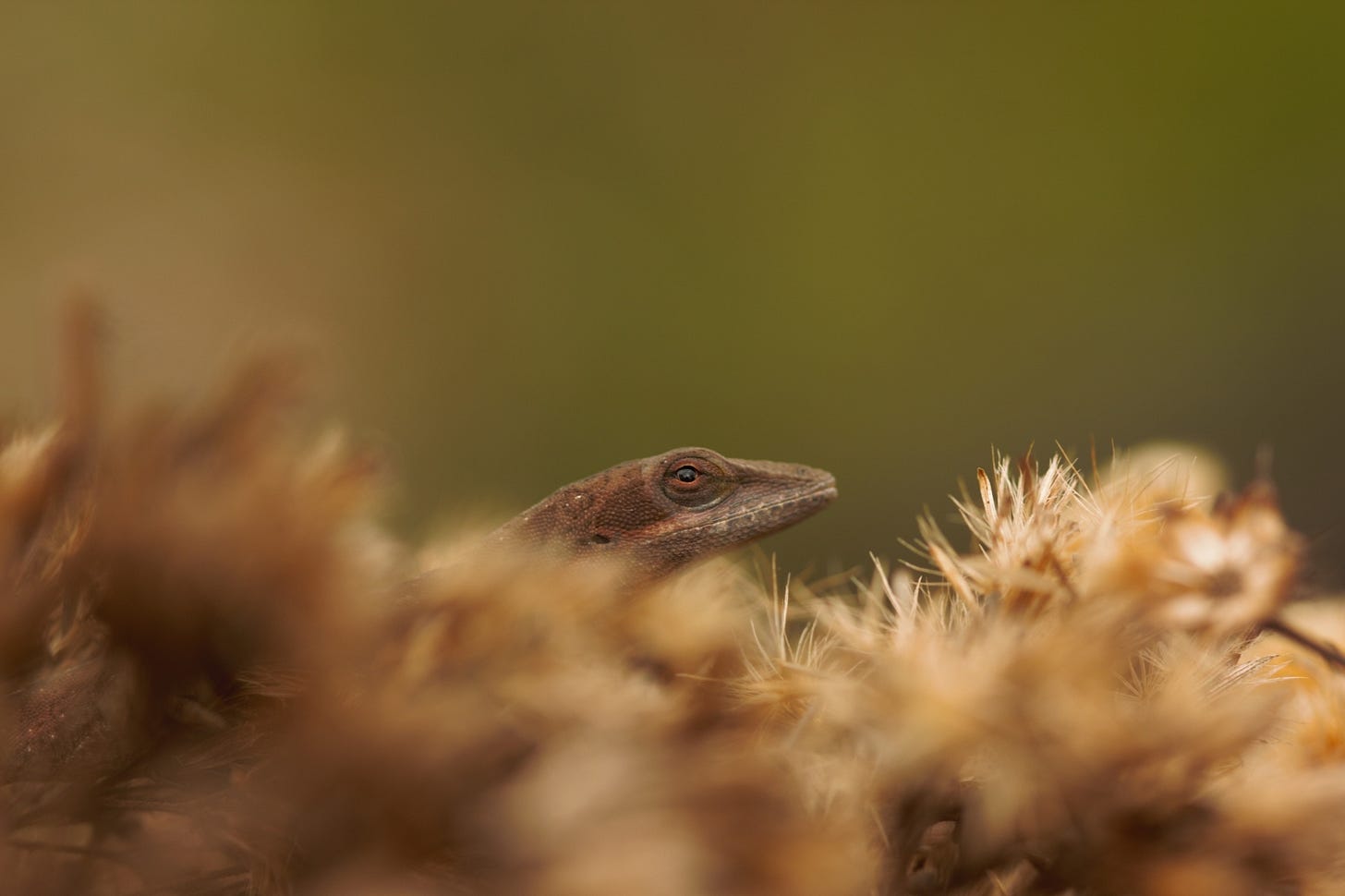
Welcome to Falling in a Bog’s many new readers! I’m happy to have you here.
This week’s post is atypical and longer than usual, because I wanted to highlight upcoming community science events; share my tips on finding wild things, especially in unexpected places; and since many new readers have subscribed in the past couple of weeks, I’ve shared more links than usual to relevant past Falling in a Bog posts. If you’re not interested in my community science story or tips, click on one of the posts linked below, visit last week’s post about spring in the Sandhills, or check out the archive.
Falling in a Bog will return to the normal schedule of photos and prose poetry essays about a specific place next week! I’ll be at the Georgia Botanical Society Wildflower Pilgrimage, and that post will likely be shorter on text (perhaps heavier on photos), drafted before I head up to the mountains, and scheduled to post while I’m gone.
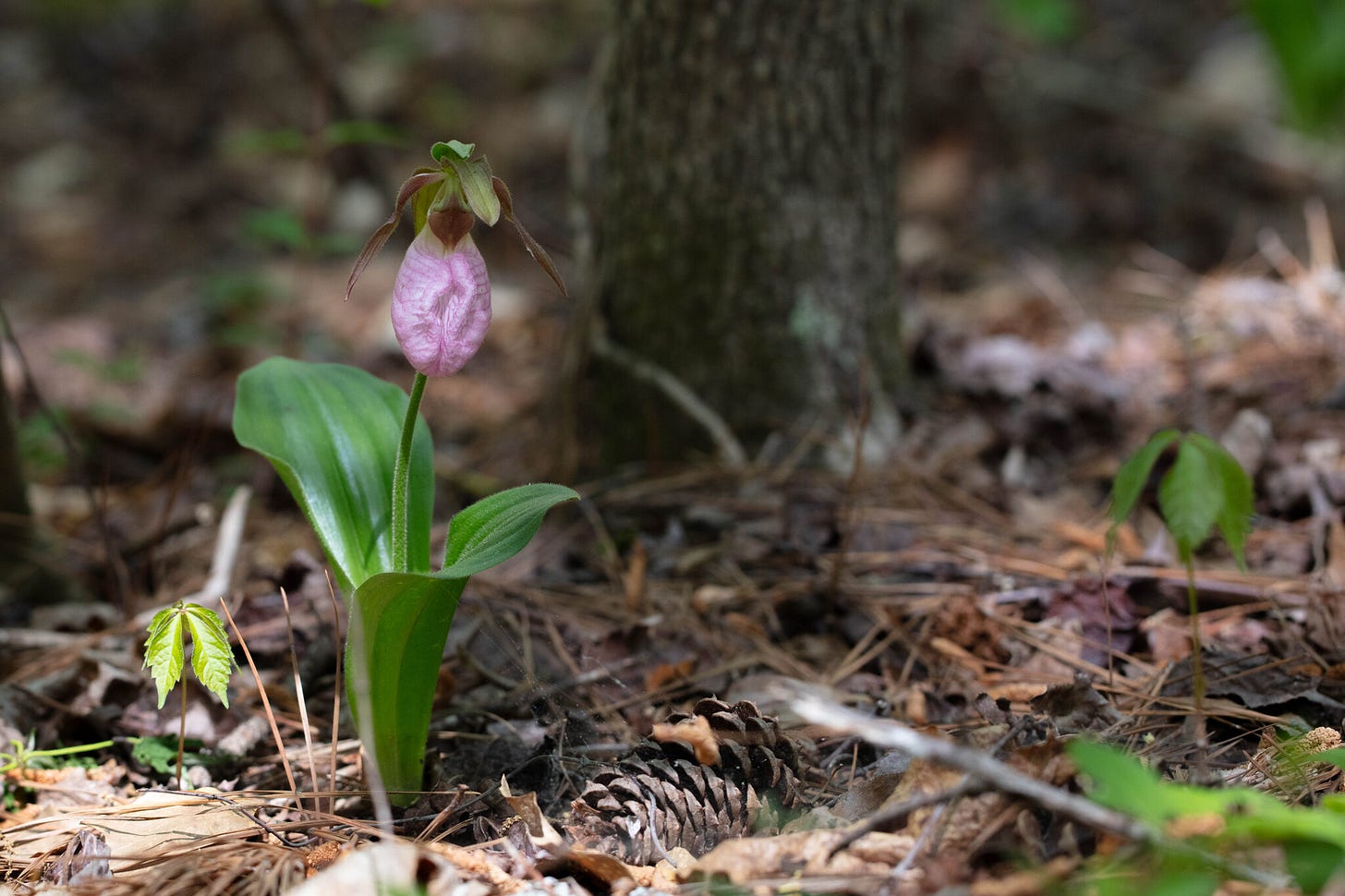
How I Accidentally Became the Top iNaturalist Observer in My State, and You Can, Too!
It started with a katydid, a bright green insect on the dark violet, ruffled leaves of the perilla1 in my vegetable garden at my former home in Scottdale, Georgia. The katydid had cartoonish, large eyes, and even larger, more cartoonish, back legs. The back pair of legs jutted out from the abdomen at an angle, longer than the rest of the insect’s body, towering far over the katydid’s head, before bending at a right angle, this second leg joint even longer than the first, reaching out far behind the katydid and ending in flat, orange feet. I posted a picture on Instagram, which cross-posted to Facebook with the caption, “Insect friend on #shiso #orthoptera #idontknowthedifferencebetweenagrasshopperandakatydid.”
My friend Lena commented, “Upload to iNaturalist for ID.”
I responded, “I have wasted months thinking iNaturalist was only for iPhones! I’m downloading it now!”
A little later, I wrote, “now I’m obsessed with iNaturalist. I’ve spent so much time today taking blurry pictures of things flying around my garden and letting computer magic help me identify it!”

I began to take pictures of every living, wild thing I encountered. When I came home from work, I would drop my bag on the front porch, distracted by an insect or a mushroom, to take a picture and upload it to iNaturalist. Each discovery would lead to another. Before I knew it, hours had passed between my arrival at home and actually crossing the threshold of my house — happy hours full of discovery and delight.
Six months later, we left our little purple house in the Scottdale Mill Village, taking as much as we could of our big perennial garden. Under the gray sky of January 2019, I dug up sod and planted my rescued flowers and elderberry bushes in the yard of our new home, a short drive from downtown Atlanta.
The Scottdale Mill Village was not far from downtown Atlanta, either, but it felt much more wild. It was a circle of historic homes — most of them small, like ours — in a large basin surrounded by hills. Ponce de Leon Avenue wrapped around two sides of the village, Your DeKalb Farmers Market2 towered over a third, and bordering the remainder of the neighborhood was woodland (which probably belongs to the farmers market.)
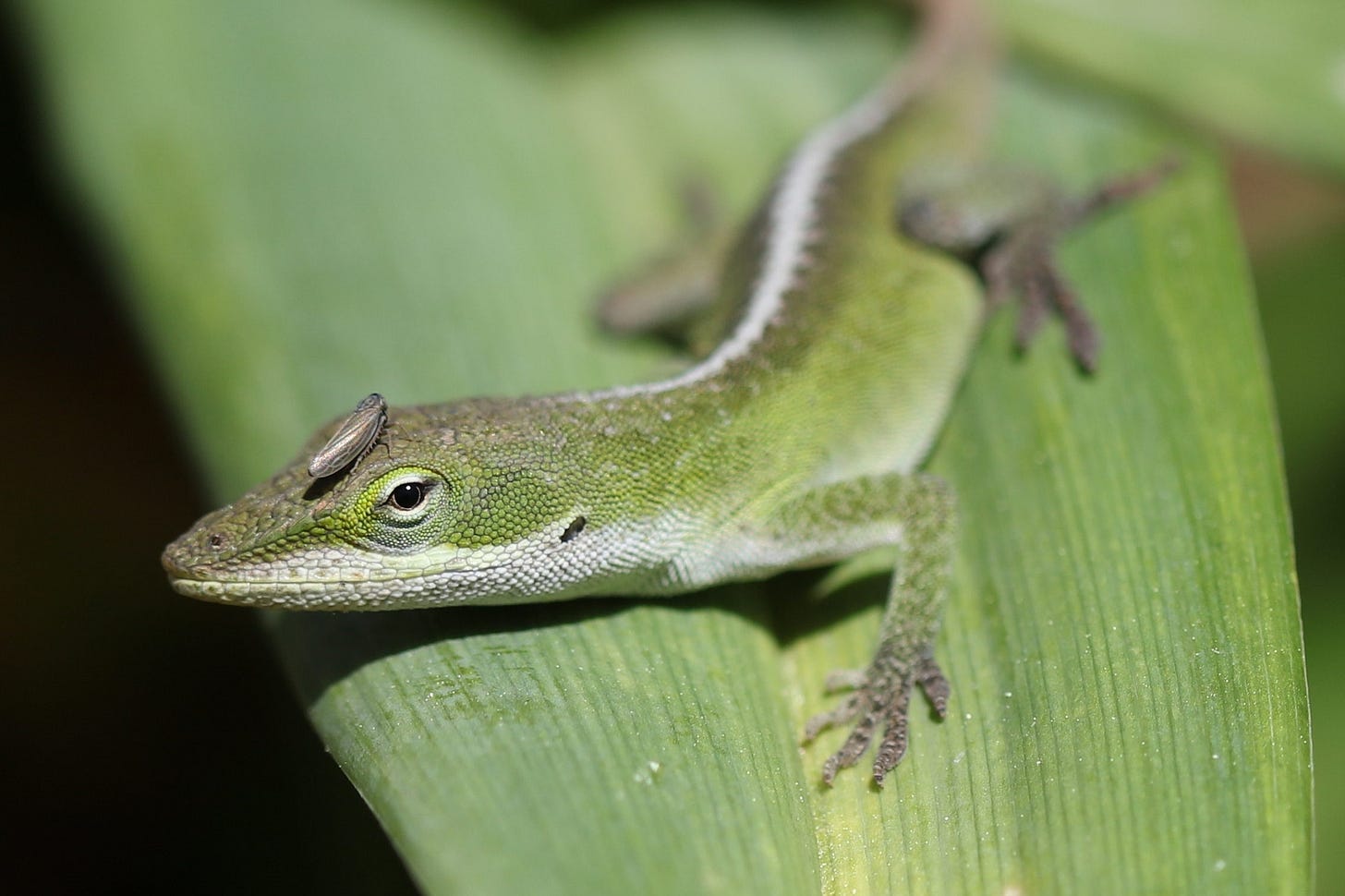
Our new home, however, is near no woodland. On all sides are more streets and houses, and a few blocks away is a busy state highway. Beyond that are train tracks. A little to the south is the world’s busiest airport. And a few months after we moved in, I became very sick with the flu, which exacerbated the asthma I’d developed from pneumonia in my last semester of law school, and for months, I experienced asthma attacks that kept me at home and away from the woods. Throughout this time, I kept taking pictures of any wild thing I saw and uploading them to iNaturalist — bugs, lichen, mushrooms, weeds, trees, squirrels, slime mold, and probably some blurry, pixelated birds. Yet I was shocked, in April 2019, to receive the following message from one of the organizers of the Atlanta City Nature Challenge:
As one of the top iNaturalist observers in Atlanta, I wanted to officially invite you to participate in the City Nature Challenge happening April 26-29th, 2019. Any species observed in metro Atlanta during that 4 day time period will be automatically added to our project (which you can also join). We're up against over 160 cities worldwide and we're the first in Georgia to ever participate. I hope you will consider joining and seeing how many observations you can tally during the challenge. I'm hoping we get a few thousand across the city!
One of the top observers in Atlanta? What!?
A year later, in 2020, I continued documenting the wildlife of both my neighborhood and Georgia’s public lands with even greater enthusiasm, with what some might call an obsession, a hyperfocus, perhaps a highly restricted, fixated interest that is abnormal in intensity or focus.3 If you’ve been reading Falling in a Bog from the beginning, you’ve heard about this. If not, you can read about it in:
The Garbage Place
Confined to my porch and property one winter day, a creaking trill caught my ear — a sound both strange and familiar. In the moments it took to run through memory, the V came into view, crossing the sky over the water tower on the hil…
One evening, my friend Lena and Elena and I were discussing my habit of hiking alone. Lena suggested I could make friends with other iNaturalist enthusiasts so I would not have to hike alone. One of us pulled up the list of iNaturalist observers in Atlanta. To my shock, the top observer on the list was me. I then looked at my standing for the state of Georgia. I was in the top ten.

A year later, I became the top iNaturalist observer in the state of Georgia, both by number of observations and by species documented. I held that spot until 2023, when my friend Leila4 surpassed me. She has held the spot for two years, while I have been bumped down to #5 by number of observations and #3 by number of species — and I am fine with this. It’s fun to challenge myself, but it’s more fun to collaborate with other naturalists, helping each other find new and exciting things and, in the process, collecting data that could be valuable to researchers and conservation scientists.
That is iNaturalist’s raison d’être — not simply to give nature nerds like us a fun hobby, a tool for an obsessive desire to collect ‘em all (figuratively speaking). Our observations become data, showing the species present in a location, the time of year that species has been seen, other species it interacts with, the phase of life (such as larva for an insect, flowering or budding or fruiting for a plant), and sometimes behavior.
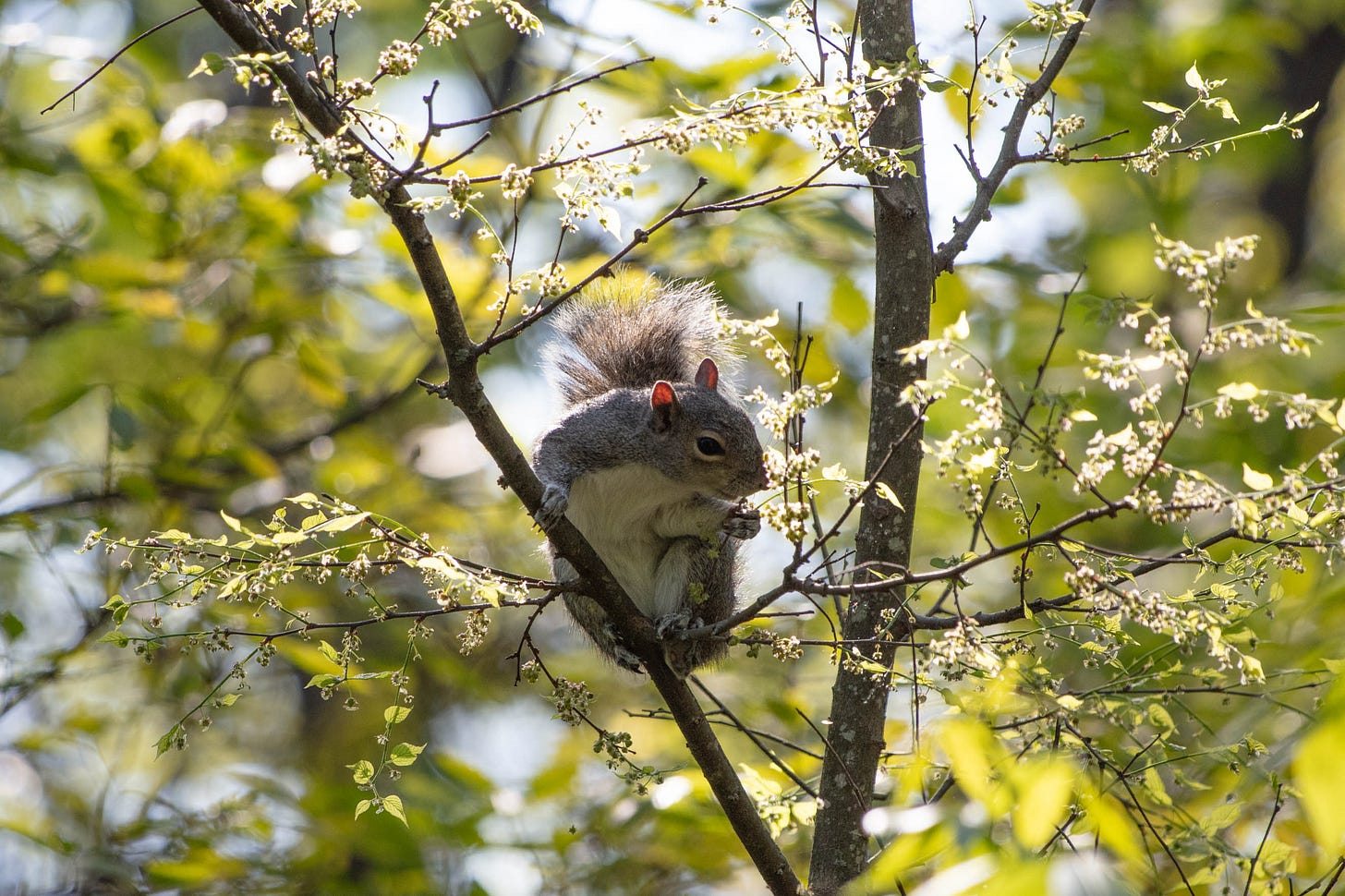
I share my iNaturalist story this week because of two upcoming community science events I’d encourage readers to check out. Friday-Monday, April 25th-28th, is the 2025 City Nature Challenge. iNaturalist.org’s Getting Started page explains how to sign up for the platform and how to use it to make observations (which you can do even if you aren’t able to participate in the City Nature Challenge.) The following weekend is the start of Gall Week May 2025, the springtime version of the community science event I wrote about this past fall. In September, I wrote about galls, leaf mines, and other constructions created by insects, and how to find them:
Arthropod Artistry
September is nearly half over. The rain our plants and soil needed has arrived. Intermittently, it falls today. The entire Saturday seems gray: from the silvery drizzle that fell as I worked in my garden this morning, to the gray clouds blanketing the sky, and the way those clouds, i…
One can start making observations and contributing to community science without joining a specific project, but because so many people are focused on helping others identify their observations, these initiatives are a great way to learn, especially for beginners. These projects encourage us to not necessarily go into “wilderness” to make observations, but to document what’s around us in our everyday, developed spaces. In “Arthropod Artistry,” linked above, I wrote, “Learning to notice and recognize the small, wild things makes every space fascinating — a potential source of discovery.”
This experience simply makes life — in any environment — a richer experience. My constant search for wildlife teaches me to see more and more. It might start with noticing a wild plant or a weed in my garden. Then, I notice the insect on the leaf. When I get closer, I might notice a gall on the plant or a leafmine etched into that leaf. I may notice a mite attached to the insect. The more you see, the more you learn to see.
And so, in preparation for the City Nature Challenge, I am sharing some of my tips for maximizing discovery in any space, even a developed space, even if you don’t have access to a nice digital camera, a spotting scope, a microscope, or even binoculars.
Tip #1 - Document Sounds
You don’t have to have a fancy camera to document birds. You can digi-bin — try lining up your phone camera to binoculars — or you can skip photos altogether. I began birding in 2020 by making recordings and learning to bird by ear with BirdNET (a precursor to Merlin) and the Peterson Birding by Ear CDs (which I highly recommend.) WAV files are best, and the Merlin app creates WAV files. You can upload directly to iNaturalist from Merlin.
You can also document the sounds of insects, frogs, toads, and other animals. Special projects exist, such as Audio Observations from Around the World to collect these observations and bring them to the attention of experts who can help identify them.
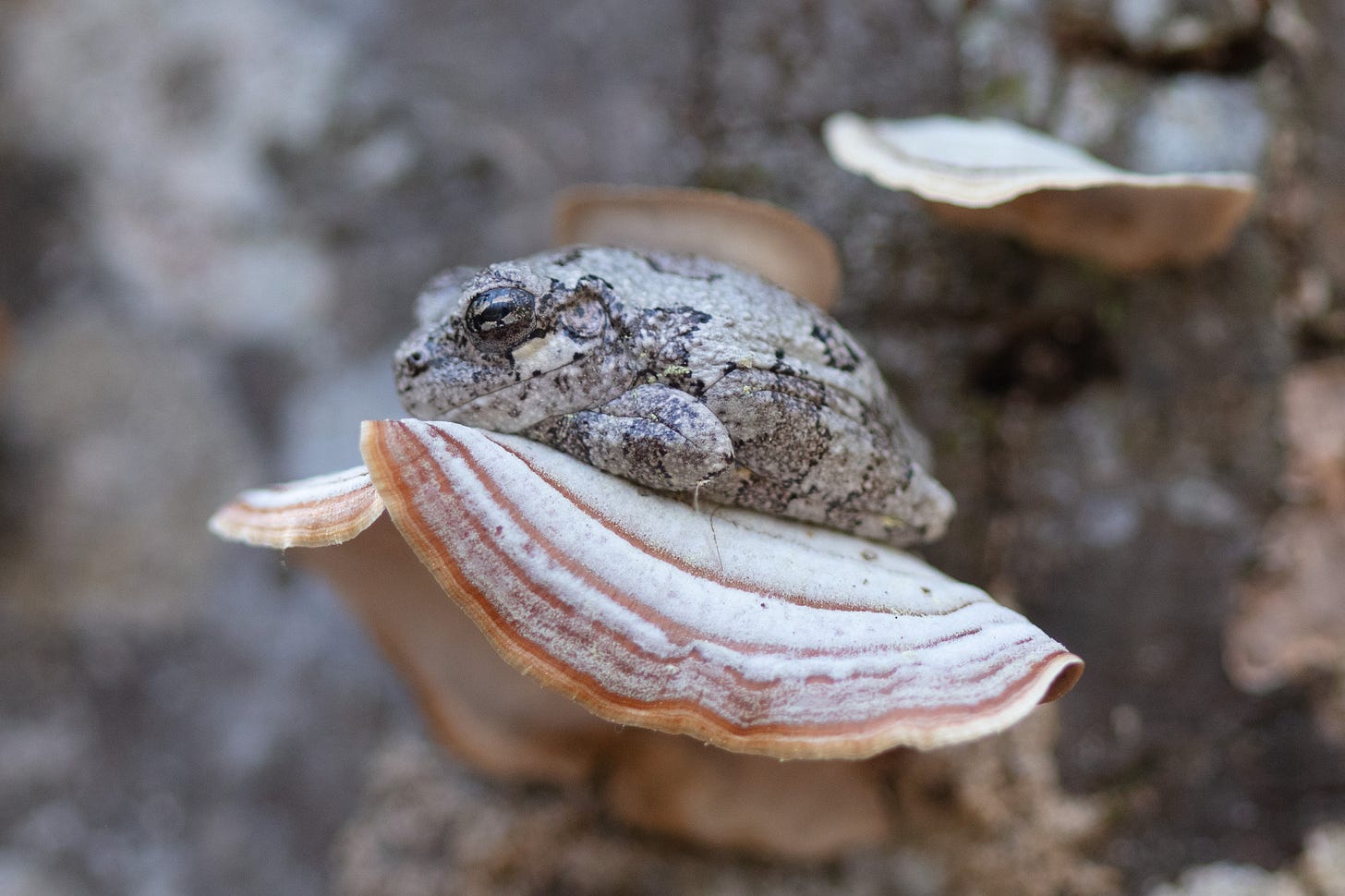
Tip #2 - Document Tracks and Signs and Add Them to Special Projects
Found a feather? Take a picture and add it to the Found Feathers project. Identifiers with special expertise in feather identification will find your observation and help you figure out whose feather you’ve found.
Did you know that yellow-bellied sapsuckers leave horizontal rows of holes in trees? I learned this from posting a photo to iNaturalist. You can add photos of footprints, feathers, nests, and holes in trees to Bird Tracks and Signs and North American Animal Tracks Database.
There are projects for Eggs and Nests. There are projects for galls, leafmines, other insect constructions, unidentifiable plant damage, plant pathogens and diseases, bones, and even scat.

Tip #3 - Annotations and Observation Fields
Annotate your observations when you can. This page explains how to use annotations, observation fields, and tags to improve the data you’re providing and sometimes to improve the observation’s chance of getting identified. This is especially true with insect larvae, eggs, caterpillars, and pupae, where you might otherwise be stuck leaving the ID as “Moths and Butterflies (Lepidoptera)”5 or even “Winged Insects (Pterygota).” Adding a Life Stage annotation will get your observation noticed by the experts.
Annotating plant phenology, such as whether or not the plant has buds, flowers, fruits, or none of the above, may not help with identification, but it does provide helpful data.
Observation fields provide an opportunity to note interactions with other species. Noting the plant on which you found a leaf mine, gall, or insect chomping leaves can be the key to identifying the species. Observation fields also help document pollination interactions.

Tip #4 - Carry a Small Mirror
Many mushrooms that can be identified from photos can only be identified from photos if you include a picture of the underside of the cap — the gills or pores. If you don’t want to knock over or break the mushroom, you can use a small mirror angled under the mushroom to reflect the gills or pores and take a picture of that reflection.

Tip #5 - Look Under Logs — Ethically
Of course I had to include a “What’s Under that Log?”6 Especially if you’re stuck in a yard or small area, make sure to check under logs, flowerpots, garbage cans, trash, etc. for things you might have overlooked, such as millipedes, garden snakes, beetles, and my beloved springtails.
While I took the below photo using a DSLR and macro lens with a flash and diffuser, you can see and document a lot with cheaper equipment, such as an inexpensive hand lens (loupe) and a headlamp (or the flashlight on your phone.)
These habitats — especially under logs — host organisms that require specific moisture conditions, so put the log (or flowerpot, etc) back as you found it — gently, so you don’t squash anything. Also, flip the log towards you, so that if anything runs out, it runs away from you. (Read more about log flipping ethics here.)
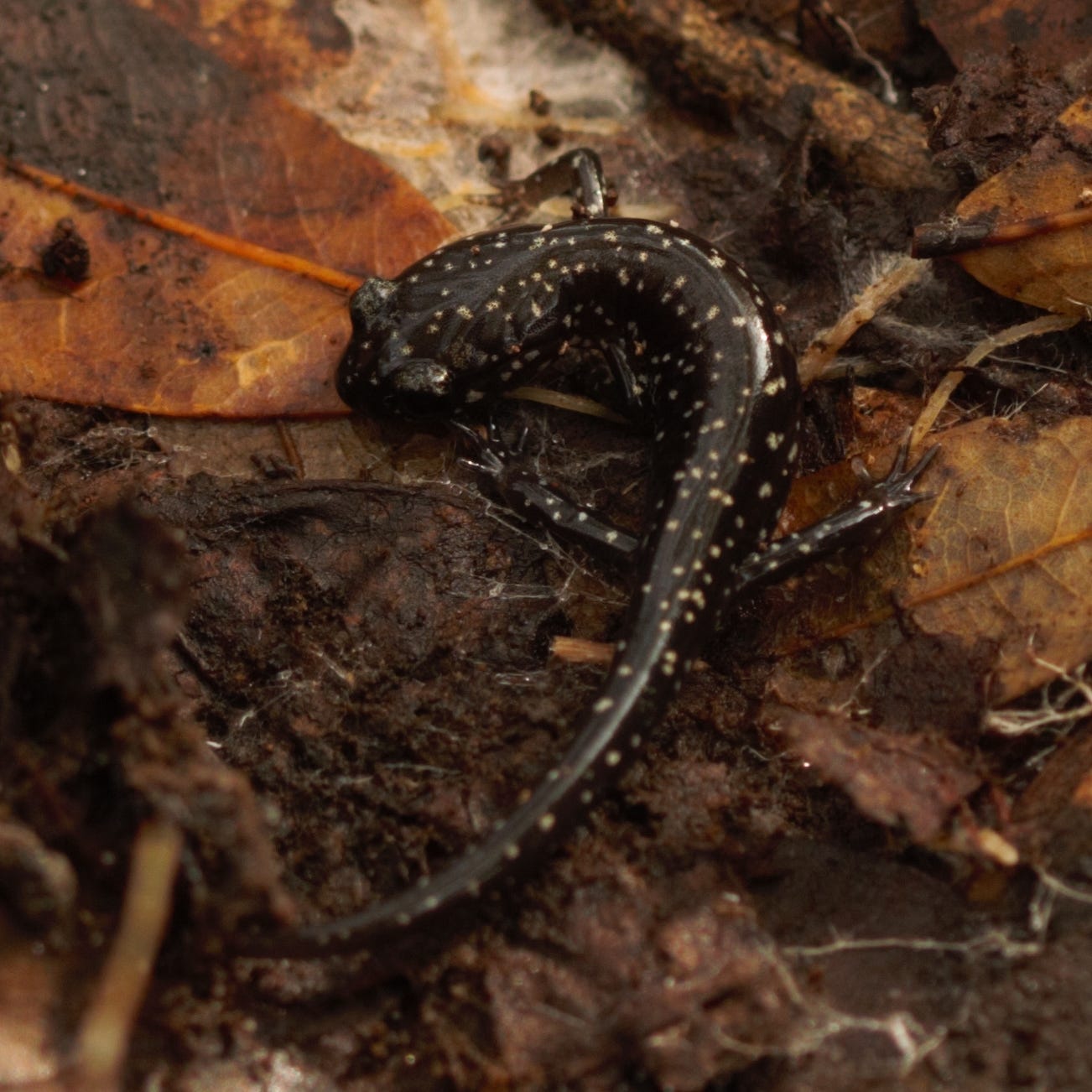
In addition to these tips, there are lichens,7 water molds, rusts, slime molds, and many, many more things to be found hiding in plain sight.
Do you have any favorite tips I didn’t include here? Please feel free to share in the comments!
No, I did not realize at the time that perilla/shiso is invasive in Georgia. Back in 2018, I grew it as a culinary herb. I do not plant it anymore.
For readers not local, Your DeKalb Farmers Market is a magical, wonderful grocery store, with a gigantic produce section and the ingredients to make just about any cuisine in the world. The interior is like a giant warehouse; it’s totally unpretentious. What keeps it from being too overwhelming is that they play no music at all. None! It’s so peaceful.
This is the language from the DSM-5 describing (and pathologizing) autistic special interests.
Lena was right. I eventually met and became friends with some of the other top observers in Atlanta and in the state of Georgia.
Moths and how to find and identify them are discussed in more detail in my National Moth Week post, which is currently my least viewed and least popular post on Substack.
It's National Moth Week!
One of my favorite annual community science events, National Moth Week takes place during the last full week of July, plus the weekends that bookend that week. This year, it ends on Sunday, July 28th, so we still have a whole weekend to celebrate!
I wrote an entire post about what’s under logs and in the dirt.
Treasures Amid Ruins
Look down; look closely. Focus on the surface of a shelf mushroom. Do you see that dark speck of soil? But it’s walking! It’s not soil at all!
I wrote more about lichens, including how to find and identify them and inexpensive tools you can get, in what is currently my most popular post on Substack:
Signs of Life Upon a Stone
In the last hour of the fading day, the vivid, bubblegum pink caught my eye. Next to the trail, a stone lay, a mix of orange-tan rock with pieces of sharp-edged, sharp-cornered pink — rose quartz, perhaps? I dropped to the ground for a closer look, resting my bag, camera, and binoculars carefully on a dry patch of rust-colored pine needles. Cold rushed …




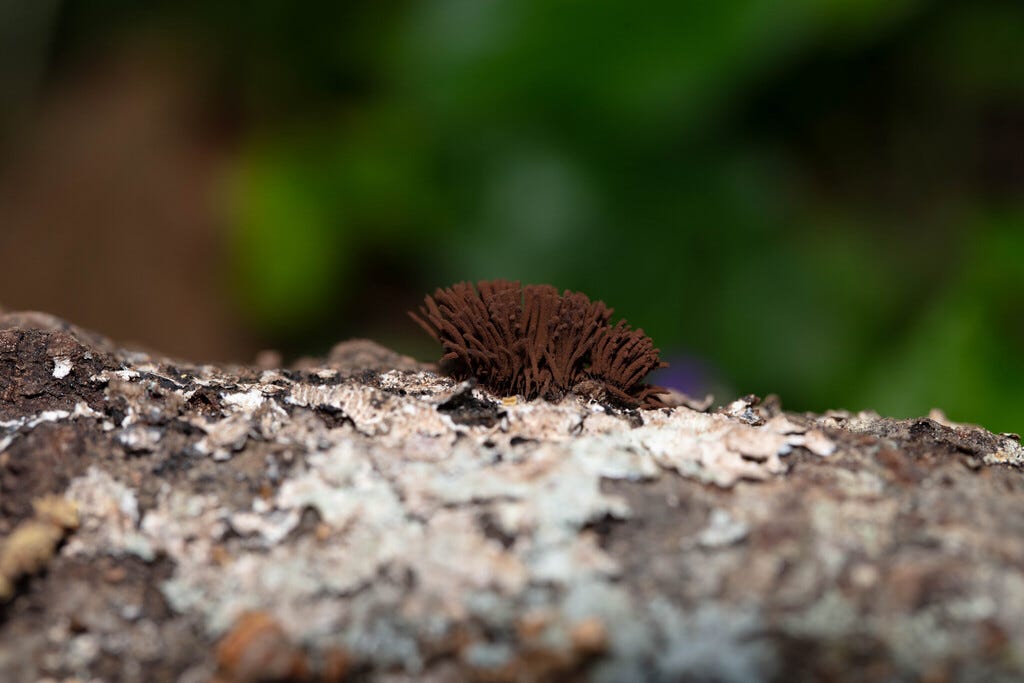
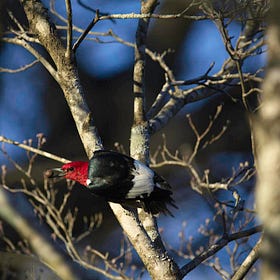
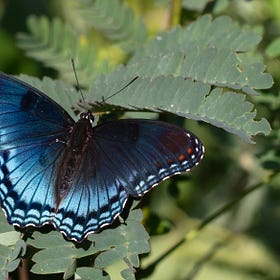
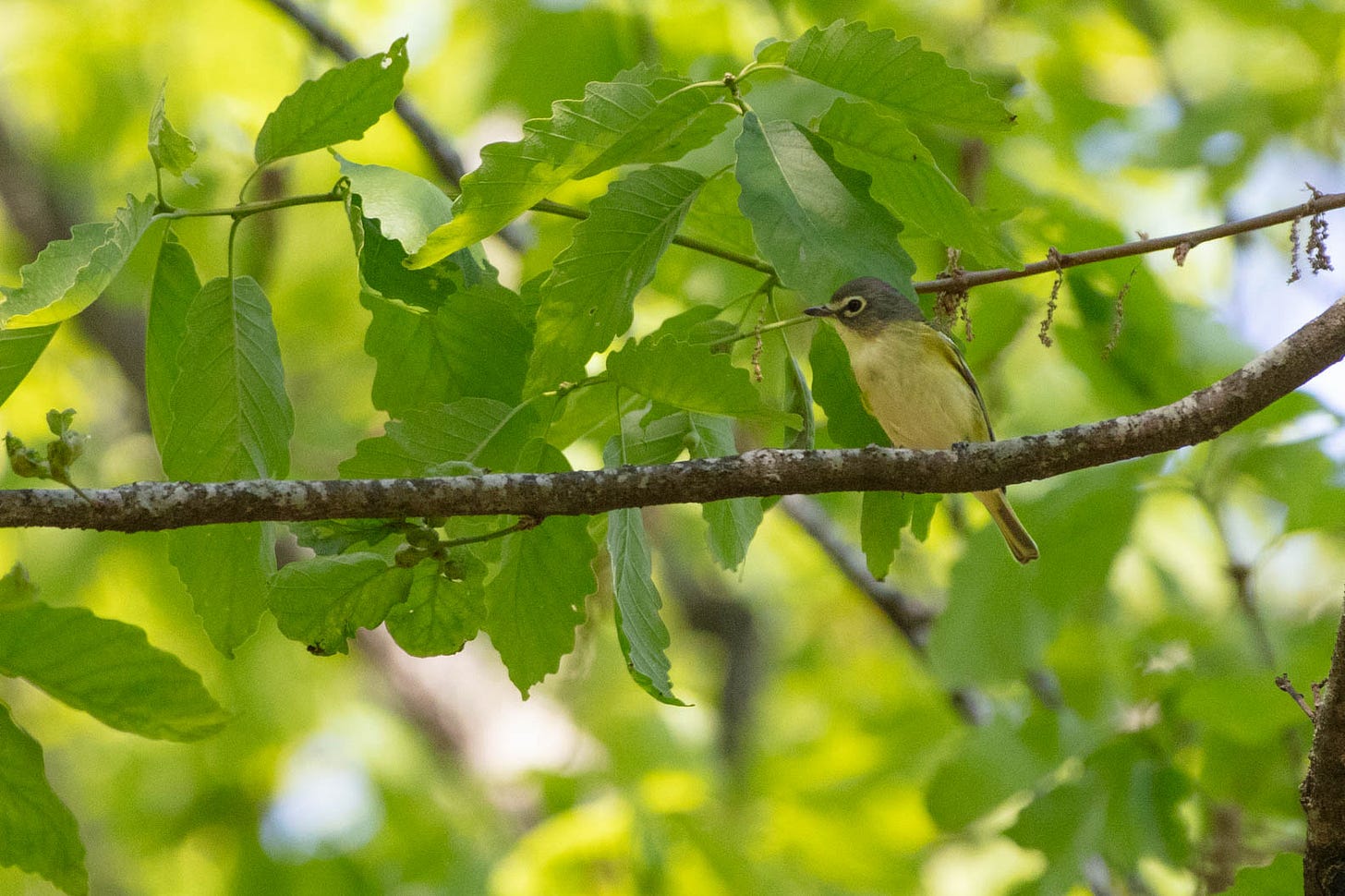
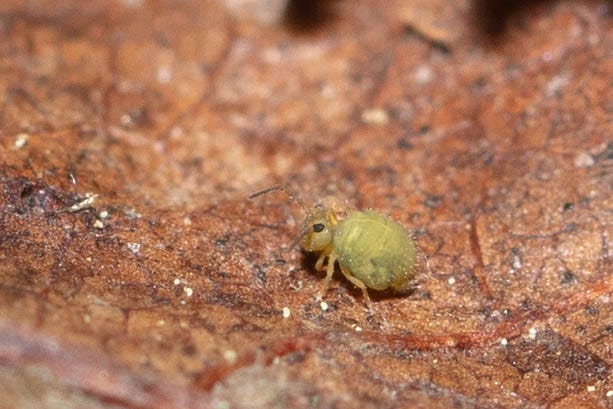
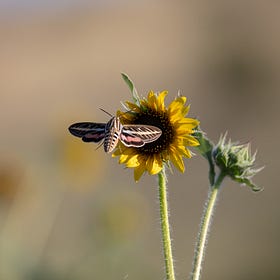
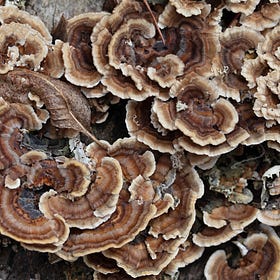
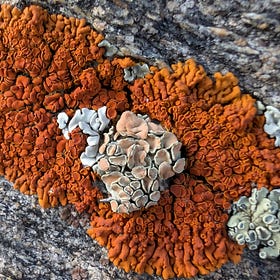
This gets better and better
I love all these tips, but I got an unexpected burst of excitement to see the Dekalb Farmers Market mentioned! My sister lived in Atlanta for about 8 years and talked about it constantly. When I finally visited it with her, it was SO much more than I had imagined it would be. It was fun to have that memory brought to the forefront of my mind tonight!